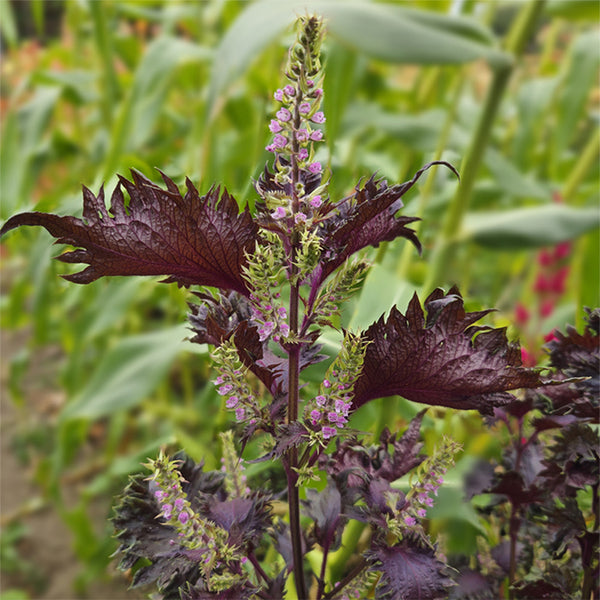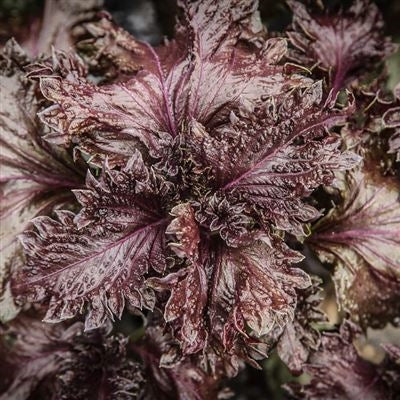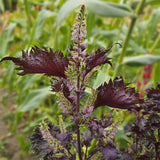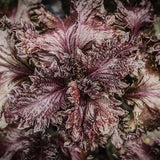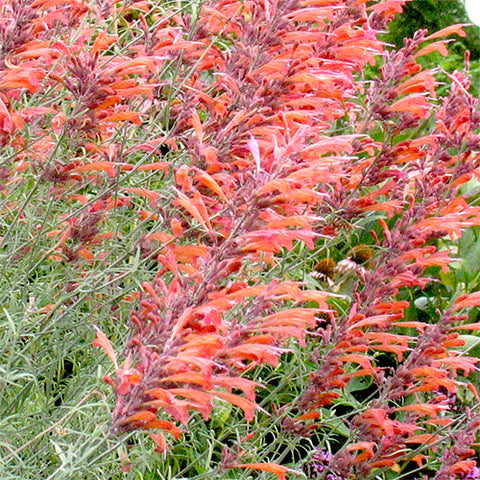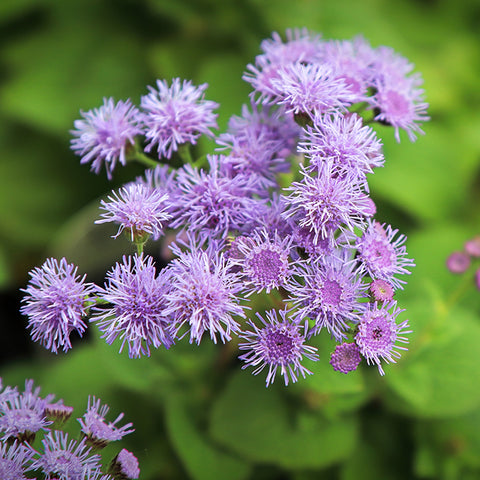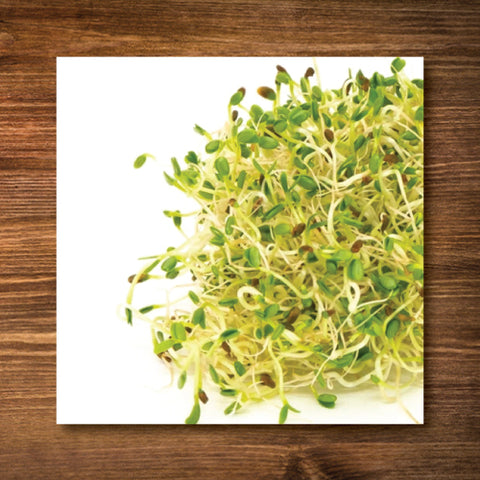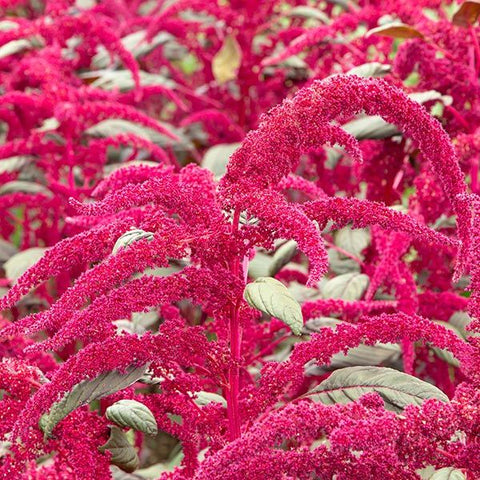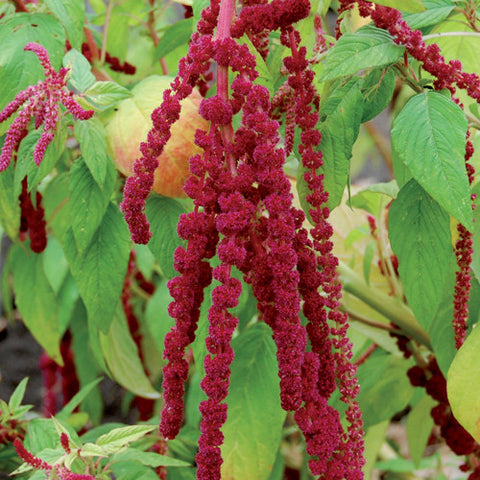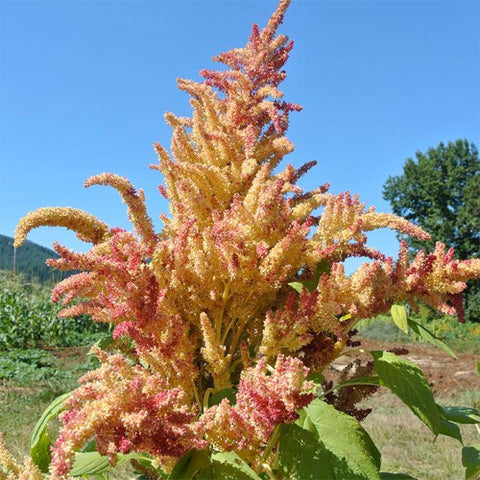Perilla (Shiso), Katy's Red (Organically Grown Seeds)
$4.79
This item may be out of season or currently out of stock. Please check back.
Description: This herb is a little under the radar for many gardeners but so worth adding to your summer herb collection! The large ruffled leaves evoke some kind of exotic basil, while the flavour has a mysterious character that shares cumin and lemony profiles. Purple Perilla is used fresh, particularly in Japanese cuisine. The purple variety is used to colour Japanese pickled ginger.
Organically Grown/ Open Pollinated/ Non-GMO
Pack Size: 100 seeds
Latin Name: Perilla frutescens
Alternative Names: akajiso
Main Uses: Culinary, ornamental
Zone Hardiness: Annual
Exposure: Full sun
Height: 60 cm (24")
Flower Color: Purple
Flowering Time: Mid to late summer
Seed Source: Organically grown
Germination: 7 - 10 days at 21° C.
Sowing: Indoors 4 - 6 weeks before the last frost date. Sow 5 - 8 seeds per cell or plug. For best results, apply Sea Magic right from the first watering. Apply a seedling starter fertilizer such as Evolve Seedling once the second set of true leaves has appeared, and then alternate between the kelp and seedling starter until transplant. Basil can be direct-seeded outdoors in early June, once the soil has warmed and there is no chance of frost. Direct seeding is an easy way to start healthy basil!
Planting Depth: Surface. Lightly press into the planting medium.
Planting Out: Plant in well-drained fertile soil (in a garden or container) once seedlings are established and the risk of frost has passed and the soil has warmed. This is usually the first week of June in southern Manitoba.
Harvesting & Preserving: Harvest by pruning on stem tips to encourage bushiness. Harvest all summer and into fall.
Growing in Containers: Well-suited for containers 15 cm (6") and up. Pots smaller than 15 cm dry out very quickly and are generally not productive.
Fertilizing (Containers): Add 25% quality compost to potting mix; fertilize weekly with a higher-nitrogen organic plant food such as Evolve Fish Grow or other organic fish-based fertilizer.
Watering (Containers): Water deeply when the top inch of soil is dry. Monitor daily during hot weather months.
Growing in Mixed Planters: Excellent for mixed herb or veggie pots.
Fertilizing (Garden): Plant into well-drained garden soil, amended yearly with quality compost such as Sea Soil. No additional fertilizer is required, although many gardeners continue to apply liquid kelp to herb and veggie gardens right through to harvest.
Watering (Garden): Water to establish (first two weeks). Once established, water weekly to maximize productivity.
Special Requirements for Cold Climate Gardeners: Perilla/shiso grows very well through the course of a prairie summer!
Pest/Disease Issues: whiteflies can be a concern on the big, broad leaves. Watch for little white flies on the undersides of the upper leaves. Manually remove any whiteflies by squishing or vacuuming off the plant (yes! vacuuming works well, just be careful not to suck up the leave leaves).
Suitability for Indoors: Perilla can be grown indoors under lights. It is best to start fresh plants from seed in the fall.
Exposure: Full sun or grow lights.
What about Grow Lights? A simple fluorescent light dramatically improves the success of perilla indoors.
Indoor Container Suggestions: Minimum 6" pot, with drainage holes. Mixed planters are not recommended indoors.
Winter Fertilizing: Under lights, fertilize weekly with a higher-nitrogen organic plant food such as Evolve Fish Grow.
Winter Watering: Under lights, water deeply every few days. If plants don't seem to be drying out, increase air circulation.
Special Instructions: Harvest and cut frequently to increase bushiness and vigour of indoor perilla.

